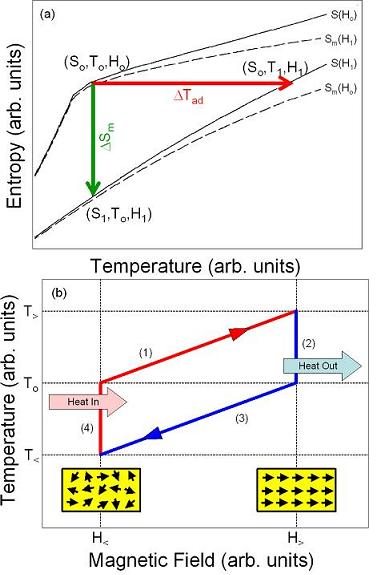Magnetic Refrigeration
Congratulations to Prof. Miller from Five Lawmakers on his YIP Award!The research objectives of this proposal are to fabricate, characterize, and explore thin films and nanostructures of Gd5(SixGe1-x)4 alloys exhibiting the giant magnetocaloric effect (MCE). Film growth will be performed via combinatorial sputtering, and will range from single layer films to multilayer heterostructures for investigating the impact of interfacial exchange interactions on the giant MCE. Nanostructures will be formed from thin films by standard lithographic techniques. The intimately coupled structural, magnetic, and calorimetric properties will be investigated on-site by X-ray diffraction, magnetometry, magnetotransport, and force microscopy; an international collaboration with Universitat de Barcelona in Spain will allow high-field differential scanning calorimetry; collaborations with two US National Labs (LBL and NIST) will allow X-ray Magnetic Circular Dichroism, neutron scattering, and Polarized Neutron Reflectivity. This research effort entails the first systematic study of the giant magnetocaloric alloys materials in reduced dimensions. Theory predicts -- and experiment confirms in other systems -- that nanostructuring is an effective method for perturbing and tuning structureproperty relationships such as the magnetocaloric effect. Further, combining the intrinsic behavior of these alloys with exchange coupling derived from precisely engineered interfaces with magnetic materials may significantly reduce the operating field strength to levels that can be delivered by permanent magnets. Carefully designed magnetic multilayer structures may allow electronic triggering of the phase transition governing the giant MCE, which would lead to novel refrigeration architectures. These potential outcomes would open new avenues for room temperature magnetic refrigeration, especially in regards to commercialization and integration with existing technologies.

| (a) S-T diagram illustrating the magnetocaloric effect. The total entropy (S, solid lines) and magnetic entropy (Sm, dashed lines) of a magnetic material are shown for two different applied fields. The figures of merit for the magnetocaloric effect, dT_{ad} and dS_{m}, are indicated by the horizontal and vertical arrows, respectively. (b) Idealized magnetic refrigeration cycle. |

